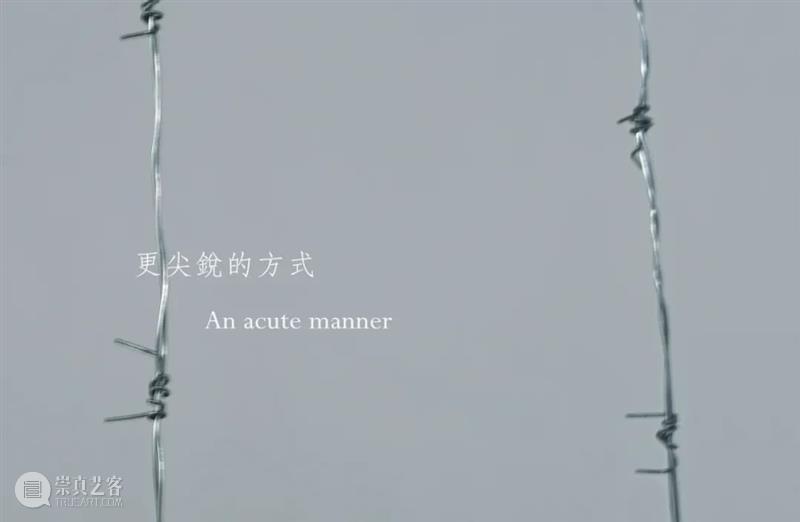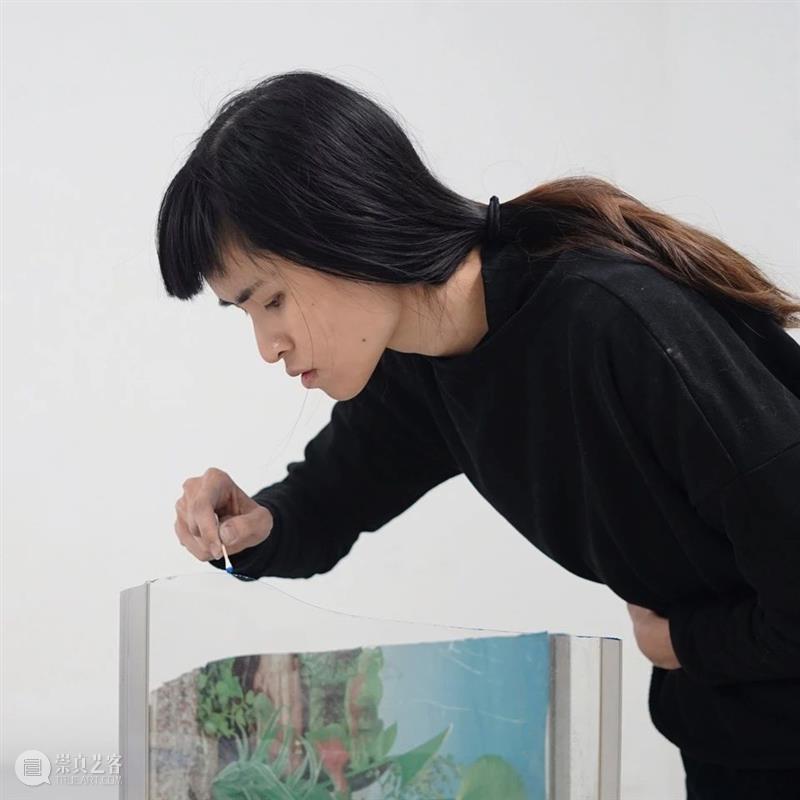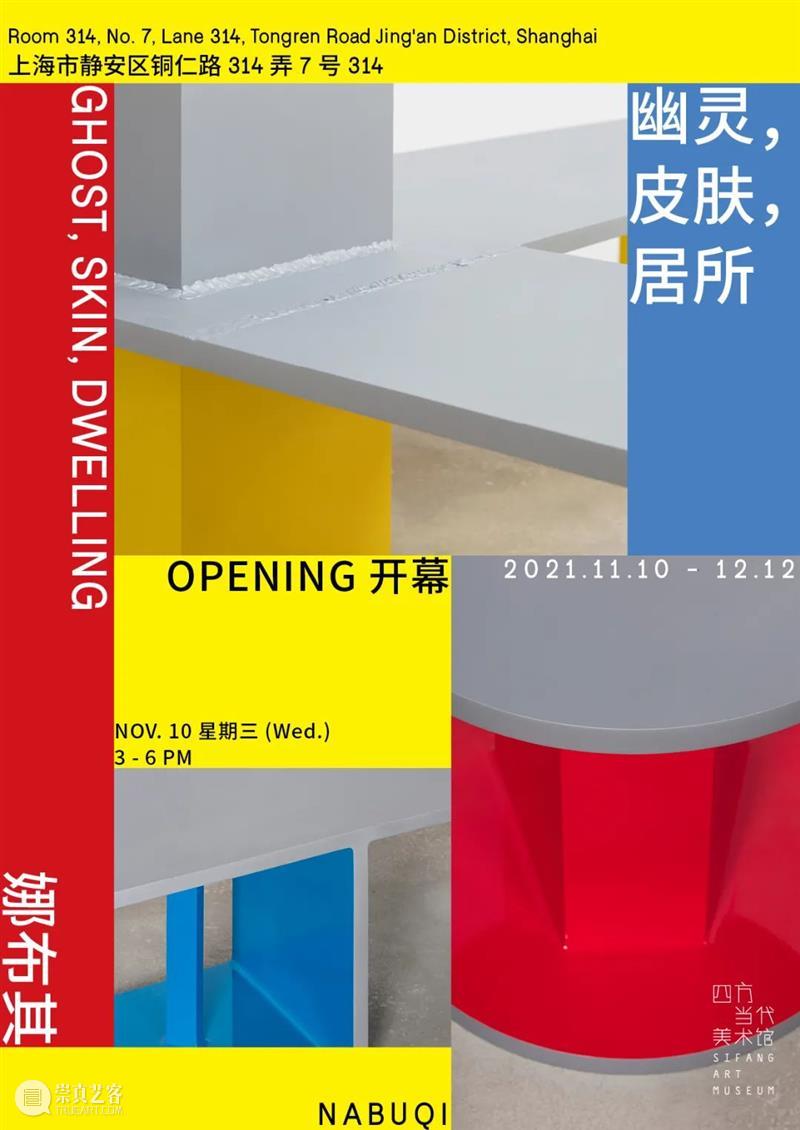
新展开幕 Upcoming Exhibition
"An Acute Manner"
2021.11.27 (周六 Sat) 3 – 6 PMTuesday to Saturday, 11 AM – 7 PM Closed on public holidays预约观展请联系 For appointments, please contact: +852 2810 0317
Unit B2, 12/F, Blue Box Factory Building, 25 Hing Wo Street, Aberdeen, Hong Kong
(Scroll down for English version)
马凌画廊荣誉呈献高倩彤在画廊的第三次个展“更尖锐的方式”,展出艺术家为画廊田湾工作室空间创作的场域特定装置作品。高倩彤在艺术实践中长期关注社会空间及日常经验的政治意义,积极捕捉转变性时刻,基于冷峻且克制的审美角度以装置、雕塑、绘画、摄影、影像等不同形式的作品再现当代社会规训人类及非人身体的过程及手段。
“更尖锐的方式”呈现高倩彤新近创作的两组场域特定装置作品:与展览同名的《更尖锐的方式》,以及《实验场》。在窗帘机械装置《更尖锐的方式》中,高倩彤运用了一般用来粗暴分隔空间的材料——铁丝圈,将卷曲、带刺的铁丝圈制作成垂直悬挂的“窗帘叶片”。此件悬挂于房顶横梁的窗帘机械装置反复横向运动,试图分隔空间关系及观察视角,将被动的防御变为主动的威胁。艺术家在展览空间四处布置的《实验场》则是多组低矮的金属围栏,附有各式被切割处理了的瓶状容器。围栏构成的矩阵和其中带有身体意味的容器以艺术家的标志性风格成为弱结构障碍—回报、危险—安全、毁坏—创造实践的“实验场”。
在“更尖锐的方式”中,两件场域特定作品构成的关系呈现了一种无戏剧性的奇异剧场形式,进一步拓展了高倩彤自2015年以来进行的复杂空间叙事实践。两件新作直接呼应了艺术家近年创作的《守护者》(2019)、《临时储存》(2019)等作品吊诡的弥散、勾连特质,也与2019年的“适当反应”及“尘埃与琐事”两次个人展览保有紧密且坚韧的联系。在前作的基础上,此次展览弱化了空间阻隔形式的实体结构,不再以高耸、全面的阻隔形式规限观众的身体及运动;同时强调了金属“尖锐”的特性,明确点出空间冷漠而危险的缘由,反面提示着艺术家在过去实践中批判的“阻隔即是保护”逻辑,并指向当下世界的虚妄清洁感以及更严苛的规条。在“更尖锐的方式”中,高倩彤也进一步发展了其艺术实践罕见却重要的元素:人类或非人类身体的存在。无论是在艺术家过去多个影像作品中出现的戴白手套的手,还是近期《硬块》(2020)作品将建筑表面视作皮肤或鲜活器官的隐喻——这些影影绰绰的身体局部在“更尖锐的方式”中转换成了被切割的、涂有聚维酮碘的瓶状容器,在强调了传染性、残破性及病变潜能的当代语境中激化了关怀、疗愈的暴力特质。
Edouard Malingue Gallery is pleased to present “An Acute Manner”, Ko Sin Tung’s third solo exhibition with the gallery, showcasing two new site-sensitive installations created specifically for the gallery’s Tin Wan studio. Over the years, Ko has been known for exploring in depth the political dimension of social spaces and everyday experience, acutely capturing transitional moments in life. From a singular perspective that is critically detached and restrained, she represents in various forms - installation, sculpture, painting, photography and video - the procedures and means through which contemporary society disciplines human and non-human bodies.
“An Acute Manner” includes two new site-sensitive installations: the eponymous An Acute Manner, and Experimental Field. For the former, which assumes the form of a curtain, Ko employs as slats straightened barbed wires that are generally used to brutally separate public and private spaces. Hung from the ceiling of the gallery space, this electrically powered installation attempts to complicate the relationship between the spatial and the visual by constantly shifting sideways, realigning passive, defensive manoeuvres with active, aggressive threats. Experimental Field, on the other hand, is a group of low, encompassing barriers; attached to the metallic structures and rods of which are dissected plastic bottles. Incorporating in an eerie fashion everyday wares and vessels anthropomorphised to different extents, Experimental Field is the latest iteration of Ko’s moderately constructed matrix of interference-feedback, danger-safety, and destruction-creation.
The two works specifically conceived for the exhibition summons strange, non-theatrical performativity, further expanding the complex spatial narrative that the artist has developed since 2015. “An Acute Manner” corresponds directly to the permeating, conspiring nature shown in recent works such as Guardian (2019) and Temporary Storage (2019), elucidating further themes from Ko’s two solo presentations in 2019: “Adaptation”, and “Dust and trivial matters”. Departing from recent projects, the latest exhibition of “An Acute Manner” weakens the physical structures of barriers and interference, no longer regulates the spectators’ bodies and movements in ways that are overwhelming and total. Instead, it emphasises the sharp, spiky nature of metallic materials, addressing with clarity the coldness and danger of the space, hinting negatively at the notion of segregation-as-protection that the artist has vehemently questioned in her previous projects. The exhibition aims at expounding the false notion of cleanliness of the world, and representing its ever-tightening control over society. In “An Acute Manner”, Ko also further nurtures a rare yet significant element: human or non-human bodies. Be it the appearances of gloved hands from her series of videos, or the building that serves as a metaphor for skin or organs in Hard Pieces (2020) - these fragmented, concealed and sketchy bodies are crystallised into the dissected plastic bottles painted with povidone-iodine, radicalising the violent nature of caring and healing practises, in a present world that particularly emphasises contaminations, disabilities and diseases.
艺术家简介 About the artist
彩绘壁纸、修补的墙壁、家常用品的模糊影像——这些都是高倩彤(生于1987年)的创作元素,她与都市中带有亲密感的生活情境展开视觉对话,挖掘每个人独自创造出来的情境趣味。高倩彤关注“物件”所带来的影响,透过各式不同媒材,她探究私密物品在人们身上所投射的心理作用,以及个人赋予物品的特殊功能。高倩彤近距离观察城市居民,好奇却又认同他们因所珍藏物品而形塑的价值观,缓慢观察这些物件是如何反映人们的生活,又或者最起码反映了他们所期望的生活方式。高倩彤为香港新锐年轻当代艺术家,2009年获香港中文大学艺术系文学士学位,现于香港生活及工作。其作品曾在本地及国际不同地方展出,包括台中市国立台湾美术馆(2021)、北京掩体空间(2019)、香港大馆当代美术馆(2018)、曼彻斯特华人当代艺术中心(2017) 等。她曾获三亚华宇青年奖评委会特别奖(2016)、香港 Pure Art Foundation 年度资助(2013-2014)和香港艺术发展局的新苗资助计划(2014) 。

图片由艺术家和马凌画廊提供
Image courtesy of the artist
and Edouard Malingue Gallery
Coloured-in wallpaper, patched walls, blurred images of domestic paraphernalia – these are but some of Ko Sin Tung’s (b.1987) visual dialogues with the intimate yet urban environments that persons individually create. Concerned with the impact of ‘things’, Ko Sin Tung investigates, through a myriad of mediums and materials, the psychological influences private objects project and the idiosyncratic functions they’ve been personally channeled to fulfill. She observes the city’s inhabitants, their close-quarters, and identifies with curiosity their values as dictated through the items they treasure and keep, slowly exploring how these objects mirror ways of life, or in the very least, illustrate what is expected for living. Ko Sin Tung is a highly promising, emerging young Hong Kong artist. She graduated from the Department of Fine Arts at the Chinese University of Hong Kong in 2009, and currently works and lives in Hong Kong. Her works have been exhibited locally and internationally, including at the National Taiwan Museum of Fine Arts, Taichung City (2021), The Bunker, Beijing (2019), Tai Kwun Contemporary, Hong Kong (2018) and Centre for Chinese Contemporary Art, Manchester (2017), amongst other locations. She was awarded the Special Jury Prize of Huayu Youth Award (2016), Pure Art Foundation Grant (2013-2014) and Project Grant (Emerging Artists Scheme) from the Hong Kong Arts Development Council (2014).
正在展出 CURRENT EXHIBITION:
















 分享
分享